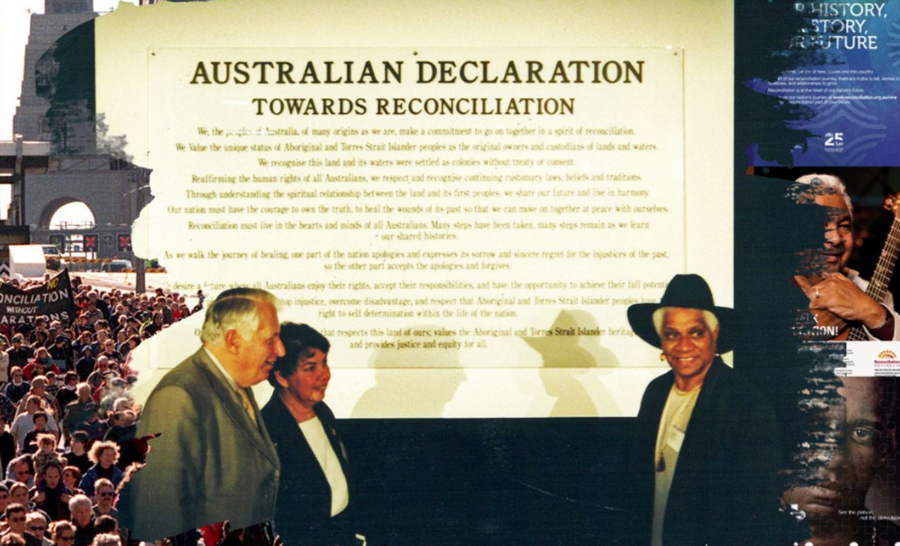
While officially established in 2001, the road that lead to Reconciliation Australia’s inception started much earlier—with Australia’s first formal process of reconciliation in 1991.
This process was set in motion by a recommendation from The Royal Commission into Aboriginal Deaths in Custody which proposed that the country urgently needed a formal process of reconciliation between Aboriginal and Torres Strait Islander and non-Indigenous peoples.
Consequently, the Commonwealth Parliament voted unanimously to establish the Council for Aboriginal Reconciliation (CAR). The intention was for the Council to have achieved reconciliation in ten years’ time—by the centenary of the Federation in 2001.
CAR’s vision was for “A united Australia which respects this land of ours; values the Aboriginal and Torres Strait Islander heritage; and provides justice and equity for all.”
In 2000, after close to a decade of research, promotion, partnership-building, consultation and educating, CAR presented its final reports to the Australian people: The Australian Declaration towards Reconciliation and The Roadmap for Reconciliation.
They made two key arguments: that firstly, a decade of formal reconciliation was nowhere near enough to address 200 years of accumulated colonialism, oppression, and genocide—much remained unfinished; and secondly, that the majority of Australians agreed reconciliation was vital for Australia’s future, and supported a formal process.
This support was evident at the many People’s Walks for Reconciliation across the country in 2000, in which hundreds of thousands of Aboriginal and Torres Strait Islander and non-Indigenous walkers crossed bridges in the name of reconciliation.
The Walks showed that while established by an Act of Parliament, the reconciliation process in Australia was truly a people’s movement.
Thus, it was from the recommendations of CAR and in-keeping with the collective galvanism of the People’s Walks, that Reconciliation Australia was formed in 2001.
Twenty years on
This year, 2021, marks twenty years of Reconciliation Australia and almost three decades of the Australian formal reconciliation process.
Over this time, support and engagement with reconciliation has steadily grown, with far greater awareness of the complexity and magnitude of First Nations cultures and knowledges.
Today, many more Australians now understand and acknowledge the brutal impact that British colonialism and the modern Australian state have had on First Nations families, communities, and ways of life.
After three decades of a formal process, reconciliation is now at a tipping point.
In 2021, reconciliation is more than just raising awareness and knowledge. The theme More than a word. Reconciliation takes action, urges the reconciliation movement towards braver and more impactful action.
While we see greater support for reconciliation from the Australian people than ever before, we must be more determined than ever if we are to achieve the goal of the movement—a just, equitable, reconciled Australia.
What Reconciliation Australia does
Reconciliation Australia is the national body for reconciliation. We are an independent not-for-profit organisation that promotes and facilitates reconciliation by building relationships, respect and trust between the wider Australian community and Aboriginal and Torres Strait Islander peoples.
The organisation focuses on influencing organisations, people and policies.
Three program areas deliver services, resources and advice to support reconciliation action within Australian businesses, schools, community groups, and government organisations— the Reconciliation Action Plan program, the Narragunnawali: Reconciliation in Education program, and the Indigenous Governance program.
Influencing people is conducted through a range of activities, using tools to educate, inform and engage all Australians in reconciliation, with National Reconciliation Week the flagship event.
Influencing policies involves producing authoritative research to inform the national conversation, including through the State of Reconciliation in Australia Report and the Australian Reconciliation Barometer.

